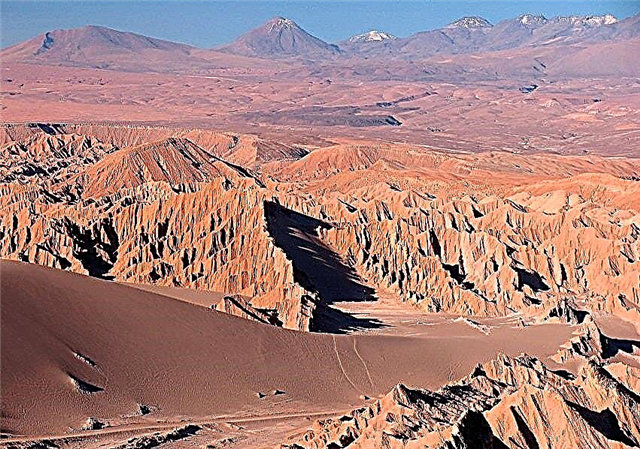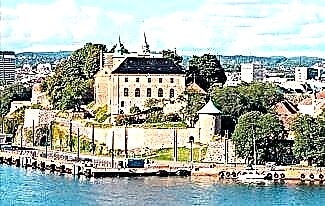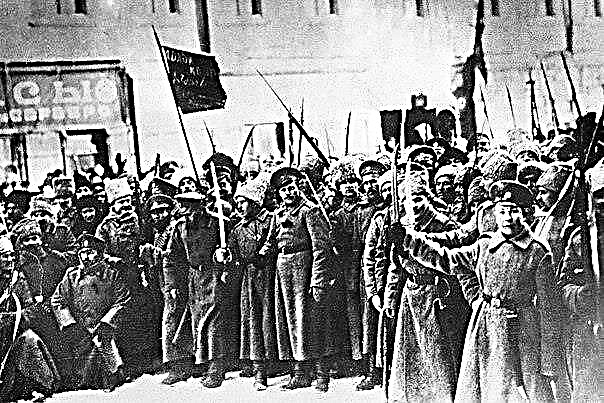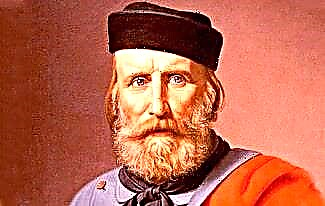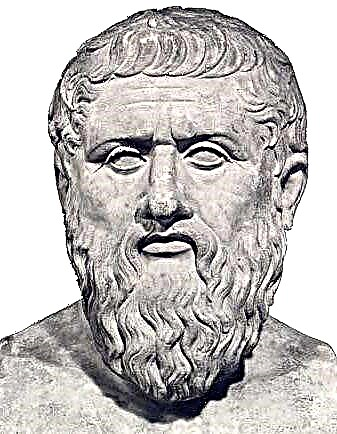Jacques-Yves Cousteau, also known as Captain Cousteau (1910-1997) - French explorer of the World Ocean, photographer, director, inventor, author of many books and films. He was a member of the French Academy. Commander of the Legion of Honor. Together with Emil Ganyan in 1943, he invented scuba gear.

There are many interesting facts in the biography of Cousteau, which we will talk about in this article.
So, before you is a short biography of Jacques-Yves Cousteau.
Biography of Cousteau
Jacques-Yves Cousteau was born on June 11, 1910 in the French city of Bordeaux. He was brought up in the family of a wealthy lawyer Daniel Cousteau and his wife Elizabeth.
By the way, the father of the future researcher was the youngest doctor of law in the country. In addition to Jacques-Yves, the boy Pierre-Antoine was born in the Cousteau family.
Childhood and youth
In their free time, the Cousteau family loved to travel the world. In early childhood, Jacques-Yves became interested in the water element. When he was about 7 years old, doctors gave him a disappointing diagnosis - chronic enteritis, as a result of which the boy remained skinny for life.
Doctors warned parents that due to his illness, Jacques-Yves should not be under heavy stress. After the end of the First World War (1914-1918), the family lived for some time in New York.
During that period of his biography, the child began to be interested in mechanics and design, and also, together with his brother, sank under water for the first time in his life. In 1922 the Cousteau family returned to France. An interesting fact is that a 13-year-old boy here independently designed an electric car.

Later, he managed to buy a movie camera with the saved savings, with which he filmed various events. Due to his curiosity, Jacques-Yves devoted little time to school, as a result of which he had low academic performance.
After some time, the parents decided to send their son to a special boarding school. Surprisingly, the young man was able to improve his academic performance so well that he graduated from the boarding school with the highest marks in all disciplines.
In 1930, Jacques-Yves Cousteau entered the Naval Academy. It is curious that he studied in the group that was the first to travel around the world. One day he saw scuba diving goggles in a store, which he immediately decided to buy.
Having dived with glasses, Jacques-Yves immediately noted for himself that from that moment on his life would be associated only with the underwater world.
Marine research
In the early 50s of the last century, Cousteau rented the decommissioned minesweeper Calypso. On this ship, he planned to conduct a number of oceanographic studies. World fame fell on the young scientist in 1953 after the publication of the book "In the world of silence".
Soon, based on this work, a scientific film of the same name was shot, which won the Oscar and the Golden Palm in 1956.
In 1957, Jacques-Yves Cousteau was entrusted with the management of the Oceanographic Museum in Monaco. Later, films such as "The Golden Fish" and "The World without the Sun" were filmed, which enjoyed no less success with the audience.

In the second half of the 60s, the famous series "The Underwater Odyssey of the Cousteau Team" began showing, which was broadcast in many countries over the next 20 years. In total, about 50 episodes were shot, which were dedicated to marine animals, coral jungle, the largest bodies of water on the planet, sunken ships and various mysteries of nature.
In the 70s, Jacques-Yves traveled with an expedition to Antarctica. There were filmed 4 mini-films that told about the life and geography of the region. Around the same time, the researcher founded the Cousteau Society for the Conservation of the Marine Environment.
In addition to "The Underwater Odyssey", Cousteau shot many more interesting scientific series, including "Oasis in Space", "Adventures in St. America", "Amazon" and others. These films were a huge success all over the world.
They allowed people for the first time in all details to see the underwater kingdom with its marine inhabitants. Spectators watched as fearless scuba divers swam alongside sharks and other predators. However, Jacques-Yves has often been criticized for being pseudoscientific and cruel to fish.
According to a colleague of Captain Cousteau, Wolfgang Auer, fish were often brutally killed just so that the operators could shoot quality material.
The sensational story of people leaving the bathyscaphe into an atmospheric bubble formed in a deep-water cave is also known. Experts said that in such caves, the gaseous atmosphere is not breathable. And yet, most of the experts speak of the Frenchman as a nature lover.
Inventions
Initially, Captain Cousteau dived under the water using only a mask and a snorkel, but such equipment did not allow him to fully explore the underwater kingdom.
At the end of the 30s, Jacques-Yves, together with like-minded Emile Gagnan, began developing a scuba gear that allowed breathing at great depths. In the midst of World War II (1939-1945), they constructed the first efficient underwater breathing device.
Later, using scuba gear, Cousteau successfully descended to a depth of 60 m! An interesting fact is that in 2014 the Egyptian Ahmed Gabr set the world record for diving to a depth of 332 meters!

It is thanks to the efforts of Cousteau and Gagnan that today millions of people can go diving, exploring the depths of the sea. It is worth noting that the Frenchman also invented a waterproof film camera and lighting device, and also built the first television system that allows shooting at great depths.
Jacques-Yves Cousteau is the author of the theory according to which porpoises possess echolocation, which helps them find the most correct path during long distances. Later, this theory was proven by science.
Thanks to his own popular science books and films, Cousteau became the founder of the so-called divulgationism - a method of scientific communication, which is an exchange of opinions between professionals and an interested audience of ordinary people. Now all modern TV projects are built using this technology.
Personal life
The first wife of Cousteau was Simone Melchior, who was the daughter of a famous French admiral. The girl took part in most of her husband's expeditions. In this marriage, the couple had two sons - Jean-Michel and Philippe.
It is worth noting that Philippe Cousteau died in 1979 as a result of the Catalina plane crash. This tragedy alienated Jacques-Yves and Simone from each other. They began living separately, continuing to be husband and wife.

When Cousteau's wife died of cancer in 1991, he remarried with Francine Triplet, with whom he had lived for more than 10 years and raised common children - Diana and Pierre-Yves.
It is curious that later, Jacques-Yves finally deteriorated relations with his first-born Jean-Michel, since he did not forgive his father for the romance and the wedding with Triplet. It went so far that the inventor in court forbade his son to use the Cousteau surname for commercial purposes.
Death
Jacques-Yves Cousteau died on June 25, 1997 from myocardial infarction at the age of 87. The Cousteau Society and its French partner “Cousteau Command” continue to operate successfully today.
Cousteau Photos








